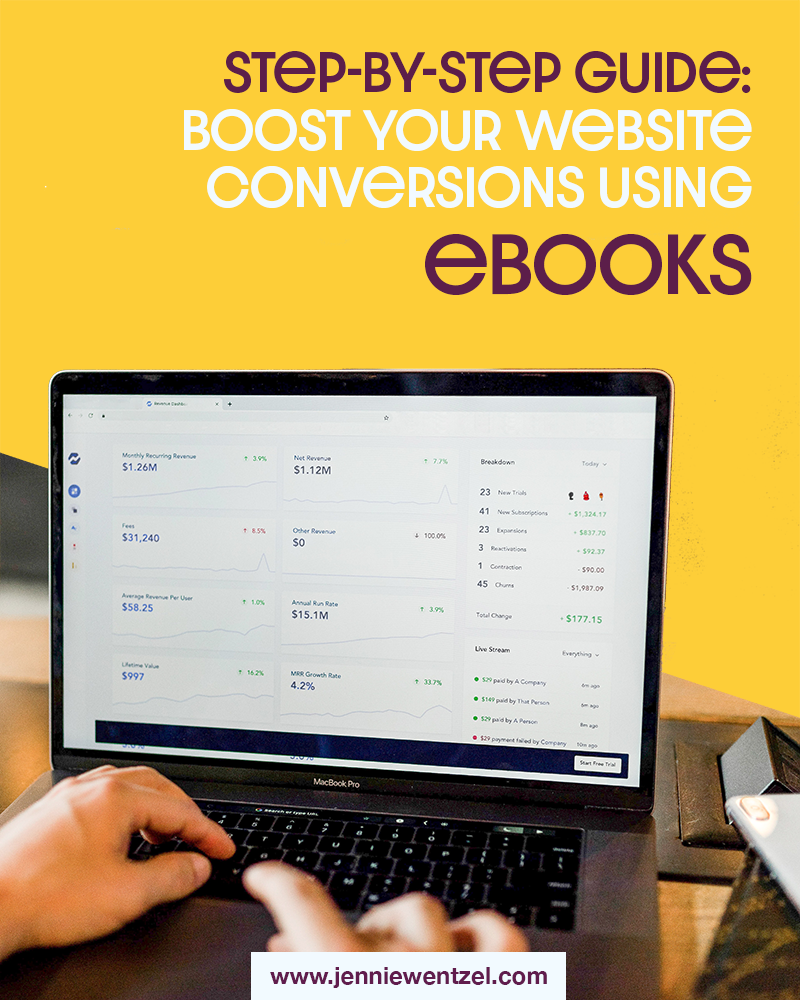Step-by-Step Guide: Boost Your Website Conversions Using eBooks
Photo by Austin Distel on Unsplash
Before I became interested in digital marketing, I thought “ebooks” were just digital versions of actual books that I could download to my iPad or Kindle. I never imagined that one day, I would be creating my own ebooks to help businesses convert website visitors into leads.
eBooks are very powerful tools that businesses of all sizes and industries can use to engage with a wider audience and boost website conversion rates. They can help you get new leads and better understand how you can better serve your customer base.
Why eBooks?
You might be thinking that there is no way you would ever have time to create an ebook. In truth, some lead-generating ebook campaigns take a long time to fully execute.
However, think of it this way: once your ebook is finished and live on your website, in most situations, it’s there for good. You can get leads coming from it even months after it’s launched! So although it may be a time investment, you will continue to see benefits from this project long-term. Also, creating an ebook is easier than you might think!
Create Your First Lead-Generating eBook, Step by Step
1. Pick a theme.
Start by asking yourself the same question you should ask before you write any piece of content: What do your customers want to know? You want to pick a topic that you not only feel comfortable writing quite a bit about, but that answers a question or questions that your target audience might ask themselves and would want to know more about.
Keep your goals in mind as well. Your ebook should be written based on the stage of your customer journey that you’re trying to grow. For example, if you’re targeting people that don’t already buy from you and may not know about your services and offerings, you should write about something more general and less about your business. However, if you want to recapture previous customers or keep current customers engaged, you can write about how to use a new feature or product that you offer.
No matter what your end goal is, your ebook should aim to create value and essentially give your readers something “for free”. After all, they will be giving you their email address, so make sure to reward them.
2. Write about it.
It’s time to get writing! When you begin, don’t worry about sounding perfect—just focus on getting the important information down. You can always go back and better organize your thoughts once you have the main ideas out there.
If you’re struggling to get started, I will let you in on a little secret: there is absolutely no rule that says you aren’t allowed to repurpose content that you’ve already written before. If you have a number of blog posts that relate to the subject matter of your ebook, feel free to incorporate them and make any necessary tweaks, updates, and additions.
Make sure the content of your ebook flows nicely and in a way that makes sense. What I like to do is start with an outline, then fill in each section on a separate page. If you follow this order, you can use your basic outline as your ebook’s table of contents.
Once you’re done writing, read your entire ebook. Then read it again. Ask someone else to read it. Sleep on it, then read it one more time. Resolve any spelling or grammatical errors as they come up. You also want to make sure your ebook is effectively conveying the information that you’re looking to share with your readers. Does it create value? Is it something that your readers will be glad they downloaded?
3. Add visuals.
Sometimes, people get really intimidated by walls of text. You want to make sure that your ebook caters to all types of readers (or non-readers). Great ebooks have plenty of visual aids and other images to help break up your text.
If you’re citing a study or statistic in your content, think about adding a graph from that study to give the full picture. If you’re explaining a process, would a visualization of that process help you convey how it all works?
Think about incorporating images in your layout that relate to your subject matter but add to the overall design and look of your pages. I love using the website Unsplash for free stock images. You can also do a search on Pixabay for free photos and illustrations.
Photo by Austin Distel on Unsplash
4. Design your book.
Make your ebook more visually appealing by adding your content to a template. If you’re not a designer, you can look at websites like Canva for easy-to-use design tools or templates.
Start with your cover page and table of contents. Then comes your main content and any sources used. At the end, don’t forget to add your acknowledgements and a page that briefly talks about your business and what you offer.
This page should include some contact information and a link to your business’ website so that readers know where to go to learn more about you. This is just in case your ebook is sent to others from someone else that was on your website.
5. Add it to your website.
Create a page on your website that includes a preview of your ebook and what readers can expect. If there is no information on exactly what reading this book will help them accomplish, visitors will be less likely to want to hand over their information to download it.
This page should also include a form that asks for an email address or phone number from visitors in order to gain access to your ebook. Be sure to store the submissions somewhere or add the email addresses to your newsletter list (as long as you get permission from the user in the form).
6. Promote it!
All that’s left now is to promote your ebook. Share a link to your ebook’s landing page on your social media accounts and newsletters. Track the number of page views versus submissions to see how well your page converts. Also, be sure to follow up on those leads!






Hi! I’m Jennie.
Thank you for visiting my blog! I write about marketing tips for small businesses and how to succeed as a female professional. I write from experience about the things that I love.